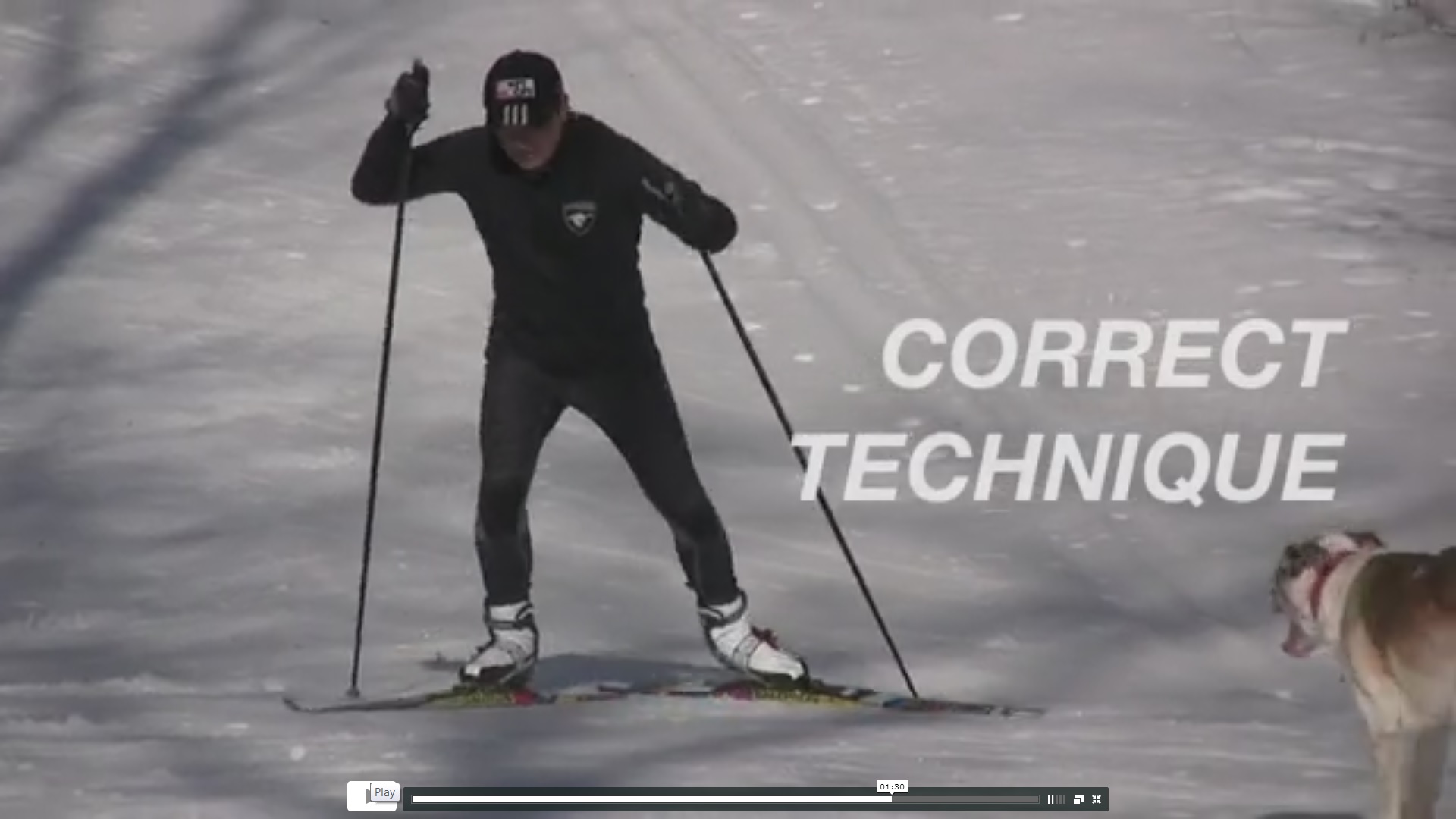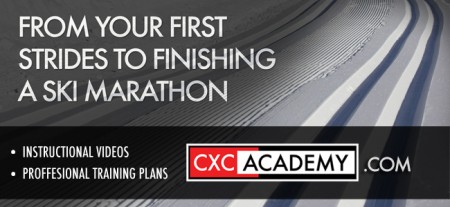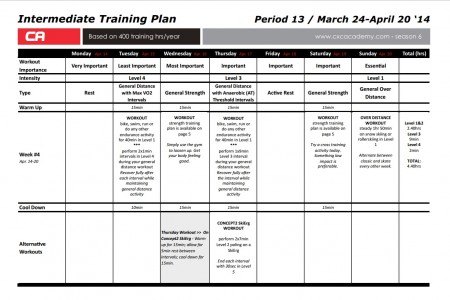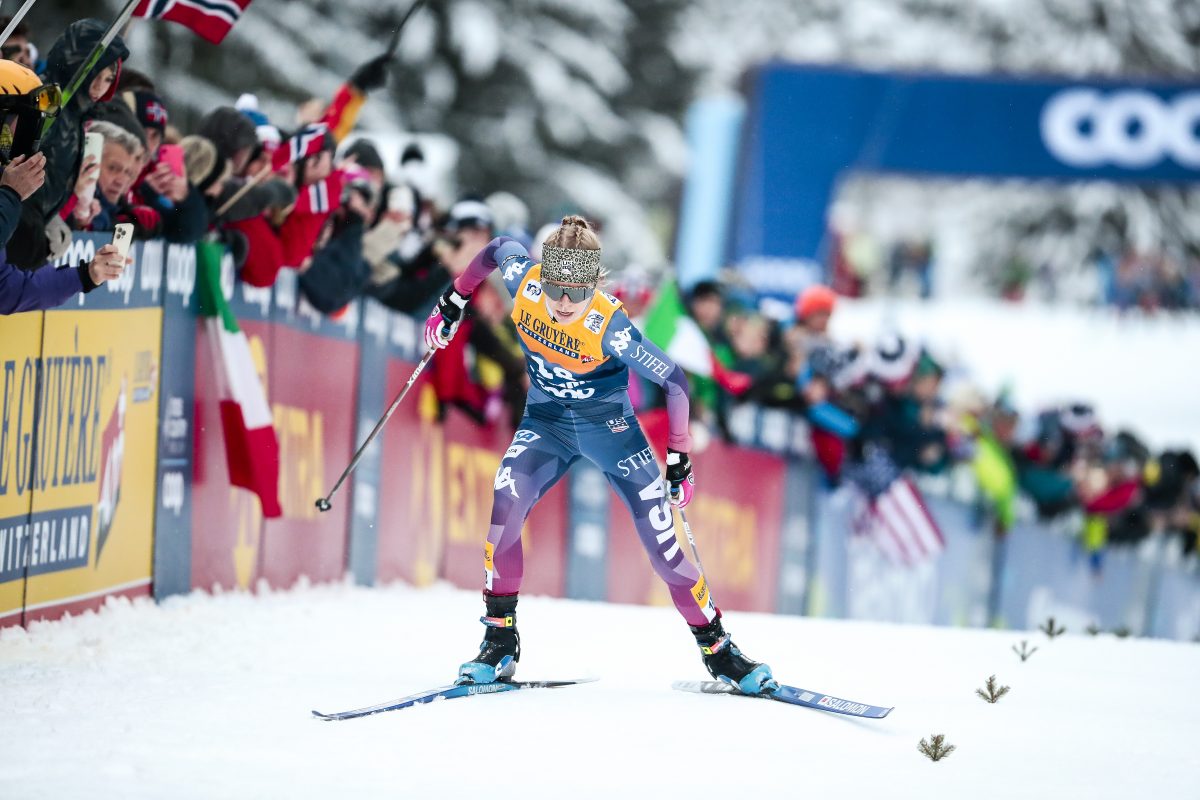
You read FasterSkier so it’s probably a safe bet that you would like to, well … ski faster!
And so if, as you recover from the recently concluded race season, you are already thinking about how to improve your race times next year, Yuriy Gusev has a plan for you. A training plan that is.
Intrigued by the CXC Academy, I called up Gusev, executive and athletic director of the Central Cross Country (CXC) Ski Association. The Academy is described on the CXC website as “an online subscription service that provides professional training plans for cross country skiers of all ages and skill levels.”
Gusev explained that was Academy was started in 2007 by himself and former CXC elite coach Bryan Fish (now the U.S. Ski Team development coach) as a way to share the state of the art ski training expertise that Gusev and Fish compiled while developing the CXC elite program.
“Bryan and myself made a lot of connections with sports professionals in strength and conditioning and sports science and medicine,” Gusev said. “We started brainstorming what can it [the Academy] be and who can it serve.”

In its early stages, the Academy was envisioned as at tool to share information for training elite athletes. While the Academy still contains an elite-level plan (plans similar to those used by CXC elite-team alumni Brian and Caitlin Gregg, Matt Liebsch, and Jessie Diggins), the program quickly expanded to include novice, intermediate and elite level format.
“Initially we thought it would work just for coaches, but it has developed pretty quickly that it can be used by anyone all over the world,” Gusev said.
So how was the elite plan modified for intermediate and even novice skiers? “We had a lot of discussions after the first year … what we did is simple, really,” Gusev explained. “We minimized number of workouts per week and number of hours and that mostly takes care of different levels. For example, somebody who trains 260 hours per year who just wants to ski the Birkie … [they don’t] need to do two Level 4 workouts a week. They might just need to go at Level 3 just above their comfortable pace for an hour and half once a week.”
I explained to Gusev my difficulty in researching how to train for two 50-kilometer citizen races (the Seeley Lake, Montana OSCR and West Yellowstone Rendezvous) last winter. My research left me overwhelmed about how I should incorporate various training elements such as intervals, strength training (I decided strength must be important after watching Kikkan Randall do pullups with weights strapped to her waist) and my first-ever pair of rollerskis, into my race preparation.
While chatting with Gusev, I discovered I wasn’t the only one lacking a training plan. “Believe it or not, we just had a coaches conference in November with about 50 coaches, both club and high school coaches, and I asked pretty straight forward question: How many of you give your athletes a day-by-day training plan?” Gusev recalled. “And probably two or three hands went up.”
He went on to explain CXC’s philosophy regarding training plans. “What we believe in our organization is that any structured plan is better than no plan,” he said. “We have athletes on that plan. We have heard from high school coaches to masters skiers to senior level athletes that they have had the best seasons ever … and they still continue to improve season after season.”
Gusev added that the Academy is for everyone from those training for marathons or short-distance races, from a high-school skier to someone who’s qualified for nationals.
“Any structured plan is better than no plan.” — Yuriy Gusev, CXC Executive Director

I told Gusev that most of my resistance to training plans was what I perceived as their inherent rigidity. I have friends who love nothing more than to see their training laid out before them on a neat, orderly grid with a little box in the corner to check when the workout has been completed. I am not one of these people.
To me working out is essentially goofing off, an escape from demands of work and life. I live in Missoula, Mont., if the weather and my work schedule allows for a short mountain-bike ride on the same day when the training plan calls for strength workout in the gym, I’ll dump the plan in a heart beat.
I asked Gusev about how his training plan can work for people with busy lives.
“From the user side, what we’ve heard is that some people follow it like a bible, literally day by day, and some people try to adapt it to work and family and other things,” he said. “What we suggest to people is that this is a road map … you know, its just getting those pieces done some time during the week. That’s what’s really important and everyone has a different way of how to structure the week around training.”
– 5-day trial: free
– 1 month: $14.95
– 1 year: $119.40
Regarding alternate training activities, Gusev said, “That’s the perfect situation, if someone can do other activities, whether you are an elite athlete or you want to be a wave Birkie skier … you just do those workouts by bike or kayak or by foot or the swimming pool but you follow the plan to build your training. Obviously, the more specific you can be the better it is. Some people might choose to rollerski once a week, and some may choose to not rollerski until September or October … so everyone is different. Even at the elite level there is no single formula out there that will make you fast.”
I discovered the Academy midway through my ski season and signed up for my free one-week introductory membership. My next race was the Peter Hale Memorial, a 22 k race with over 1,000 feet of climbing so I watched an Academy video on V1 technique. In the video, Gusev demonstrated the importance using both legs equally regardless of which side you are poling on. I focused on that single tip during my entire race. I told Gusev that I finished ahead of two racers who had beaten me [quite easily] in a race two weeks earlier. It was the first time I had ever finished ahead of one of them!
I asked Gusev if my focus on his tip could have made the difference for my improvement. “It could be, easily,” he replied. “We have a lot of people email us literally a week before the Birkie, and they say, ‘I didn’t train at all — I just want to make it through.’ You’d be amazed at how many people there are like that, and you know, there’s no magic wand to make them better, but there’s some things you can tell them, some basic tips just like what you talked about with V1.
“I’ve heard from a lot of people that we’ve given advice and they said it was magical,” he added.

CXC Academy has a video library which Gusev said sets them apart, providing both technical advice and a visual demonstration of how it should be done.
“What we learn with a technical sport like cross-country skiing that the most important part for people to understand is what they should be doing … and how the technical elements [of skiing] make them more efficient and faster,” he said. “I haven’t seen anything else out there that gives that advice.”
The Academy video offerings are extensive and include sections on strength training, on-snow skiing for both skate and classic, rollerskiing, dryland training, waxing and equipment. The videos are tightly integrated with the training plans. For example, the intermediate training plan for April calls for one day of general strength training per week. A video demonstrating all recommended exercises is linked to the plan. On a recovery day during the race season the plan might recommend that you get some wax into your ski bases and a link to a waxing technique video is provided.
The CXC Academy offers a free five-day trial period. A one-month subscription is $14.95 and one-year subscription costs $119.40.
“Those paying members … help us pay the cost of servers, the cost of hosting videos. There is cost in everything,” Gusev said. “We we give complementary memberships to Paralympic team members and high level para-athletes. Those paying memberships allows us to have this resource, and without them we couldn’t help those Paralympic athletes and organizations like National Nordic Foundation.”
Gusev said the Academy’s support of the U.S. Paralympics Nordic program wasn’t planned, but there was a need.
“We were at Park City at the National Ability Center ski camps and they had development athletes from all over the country … and they didn’t have one centralized place for getting a plan,” he explained. “For some of them, if you have an adult who has never done any athletic training in the past, now with a disability trying to do a competitive sport, for them a training plan is like, they don’t even know from what side they need to look at it.”
Since I’m just getting started following the intermediate training plan, I asked Gusev what I can expect next ski season.
“You will go faster when you want to go faster and it will be a lot more enjoyable to go faster,” he responded. “I don’t race any more, I don’t have time … but I enjoy when I go ski and I can go up a good hill at a good pace and enjoy it. I can go ski for three hours if I want to.
“Really, what [the Academy] does is builds all components of training, from anaerobic to aerobic and speed and endurance, so it gets to the point where you can do anything you want to,” he added.
I told Gusev that I race mainly to provide goals to get me out exercising and skiing. While I love skiing, I don’t consider myself to be a racer. I asked if his training plan is appropriate for someone like me.
Mark Vosburgh
FasterSkier’s Para-Nordic contributor, Mark Vosburgh lives in Missoula, Mont., where he works as a Wildfire Scientist for the US Forest Service. In addition to being a chemical engineer, Mark is a cross-country and backcountry skier, bluegrass musician, and biker. He’s also a freelance writer for numerous publications including for 48 Degrees North and MakeitMissoula.com.




2 comments
highstream
April 15, 2014 at 11:26 am
“For example, somebody who trains 260 hours per year who just wants to ski the Birkie … [they don’t] need to do two Level 4 workouts a week. They might just need to go at Level 3 just above their comfortable pace for an hour and half once a week.”
Speaking from some years of experience – and a high VO2max for my age – I’m puzzled by this passage (it seems contradictory to the sense of the rest of the article, which I appreciate). Perhaps it’s misstated, since I would think that for a typical middle age or older adult training 260 hrs/year, Level 3 for a full hour and a half once a week, or maybe even just once, would not be constructive. Looking at the summary of the Norwegian Olympic Committee’s Top Performance Group book on endurance training, which the former owner of FasterSkier passed along about a decade ago – and this is for (typically young) elite athletes – the Intensity Scale table shows Level 3 maximum duration as 50-90 minutes.
Mark Vosburgh
April 17, 2014 at 10:01 am
Thanks for your comment. The quote you remarked on was part a discussion I had with Yuriy on how the elite level plan was scaled back to create the intermediate and beginner plans. I wouldn’t read much more into it than that.
To get a sense of the training philosophy behind the CXC plan I’d recommend folks sign up for the free trial and take a look at the various plans and videos. For someone like me who is new to training plans it’s a great resource.
For people with more experience, the Academy might give some fresh training ideas to try or to supplement the training philosophy you are comfortable with.